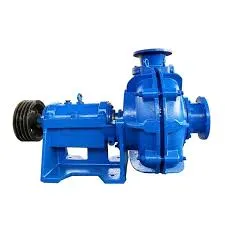English
- Afrikaans
- Albanian
- Amharic
- Arabic
- Armenian
- Azerbaijani
- Basque
- Belarusian
- Bengali
- Bosnian
- Bulgarian
- Catalan
- Cebuano
- Corsican
- Croatian
- Czech
- Danish
- Dutch
- English
- Esperanto
- Estonian
- Finnish
- French
- Frisian
- Galician
- Georgian
- German
- Greek
- Gujarati
- Haitian Creole
- hausa
- hawaiian
- Hebrew
- Hindi
- Miao
- Hungarian
- Icelandic
- igbo
- Indonesian
- irish
- Italian
- Japanese
- Javanese
- Kannada
- kazakh
- Khmer
- Rwandese
- Korean
- Kurdish
- Kyrgyz
- Lao
- Latin
- Latvian
- Lithuanian
- Luxembourgish
- Macedonian
- Malgashi
- Malay
- Malayalam
- Maltese
- Maori
- Marathi
- Mongolian
- Myanmar
- Nepali
- Norwegian
- Norwegian
- Occitan
- Pashto
- Persian
- Polish
- Portuguese
- Punjabi
- Romanian
- Russian
- Samoan
- Scottish Gaelic
- Serbian
- Sesotho
- Shona
- Sindhi
- Sinhala
- Slovak
- Slovenian
- Somali
- Spanish
- Sundanese
- Swahili
- Swedish
- Tagalog
- Tajik
- Tamil
- Tatar
- Telugu
- Thai
- Turkish
- Turkmen
- Ukrainian
- Urdu
- Uighur
- Uzbek
- Vietnamese
- Welsh
- Bantu
- Yiddish
- Yoruba
- Zulu
Telephone: +86 13120555503
Email: frank@cypump.com
Dec . 05, 2024 06:58 Back to list
Comparison of Sump Pumps and Ejector Pumps for Residential Water Management Solutions
Understanding Sump Pumps and Ejector Pumps Essential Tools for Flood Prevention
When it comes to managing water in residential and commercial spaces, sump pumps and ejector pumps play crucial roles. Both systems are designed to handle water accumulation but serve different purposes and operate under varying conditions. Understanding the key features and functionalities of these two types of pumps can help homeowners and property managers make informed decisions about flood prevention and water management.
What is a Sump Pump?
A sump pump is a device installed in the lowest part of a basement or crawl space of a home. Its primary function is to prevent flooding by removing excess water that accumulates in a sump basin. These pumps are typically used in areas prone to groundwater flooding or heavy rainfall. Sump pumps are designed to activate automatically when water reaches a certain level and will work continuously until the water is drained.
There are two main types of sump pumps submersible and pedestal. Submersible pumps are placed directly in the water, making them less visible and often quieter during operation. Pedestal pumps, on the other hand, have a motor that is located above the sump basin, making them easier to access for maintenance, but they can be noisier.
What is an Ejector Pump?
Ejector pumps, sometimes referred to as sewage pumps, are essential for managing wastewater and sewage in homes that do not have access to gravity drainage. These pumps are typically used in basements, particularly in homes where bathrooms, sinks, or washing machines are located below the main sewer line. Ejector pumps work by collecting waste materials and water in a holding tank and then using a motor to force the waste upwards into the sewer line or septic system.
Ejector pumps are designed to handle solid waste, which means they are equipped with powerful motors and a specialized impeller to chop and move solids effectively. This makes them an ideal solution for basement bathrooms, laundry rooms, and other areas prone to sewage backups.
sump pump ejector pump

Key Differences Between Sump Pumps and Ejector Pumps
While both sump pumps and ejector pumps are vital for water management, they serve different purposes. Sump pumps are primarily geared towards removing excess water and preventing flooding before it can cause property damage. In contrast, ejector pumps deal with sewage and wastewater, ensuring that homes have a sanitary drainage solution.
Another key difference lies in their construction and operation. Sump pumps typically operate on clean water, while ejector pumps are designed to handle waste materials and solids. As such, ejector pumps must have more robust components to ensure reliability when dealing with harsher conditions.
Installation and Maintenance
Proper installation and maintenance are crucial for the effective operation of both sump and ejector pumps. For sump pumps, it is important to ensure that the discharge pipe is routed away from the building’s foundation to prevent water from re-entering. Regular maintenance checks, including cleaning the pit and checking the float switch, can enhance the longevity of a sump pump.
Ejector pumps also require regular upkeep. Homeowners should check the pump for blockages and ensure that the discharge is functioning properly. It is advisable to consult with a plumbing professional for installation and maintenance, especially with ejector pumps, to avoid costly backups and repairs.
Conclusion
In summary, both sump pumps and ejector pumps are essential tools for effective water management, each fulfilling its unique role in protecting homes and properties from water damage and sanitary issues. Understanding the distinctions between these pumps helps homeowners make informed decisions tailored to their specific needs and conditions. By investing in the right system and maintaining it properly, you can safeguard your property against the challenges of excess water and sewage concerns.
-
ISG Series Vertical Pipeline Pump - Chi Yuan Pumps Co., LTD.
NewsJul.30,2025
-
ISG Series Vertical Pipeline Pump - Chi Yuan Pumps Co., LTD.|energy-efficient fluid handling&industrial durability
NewsJul.30,2025
-
ISG Series Vertical Pipeline Pump - Chi Yuan Pumps | Advanced Engineering&Industrial Efficiency
NewsJul.30,2025
-
ISG Series Pipeline Pump - Chi Yuan Pumps | High Efficiency, Energy Saving
NewsJul.30,2025
-
ISG Series Vertical Pipeline Pump-Chi Yuan Pumps|High Efficiency&Reliable Performance
NewsJul.29,2025
-
ISG Series Vertical Pipeline Pump|High Efficiency&Low Noise
NewsJul.29,2025










